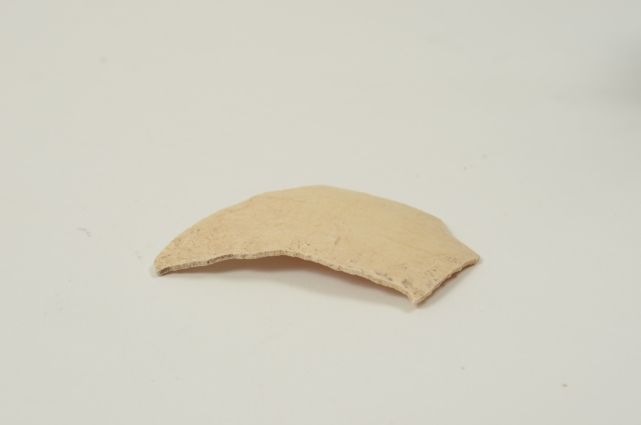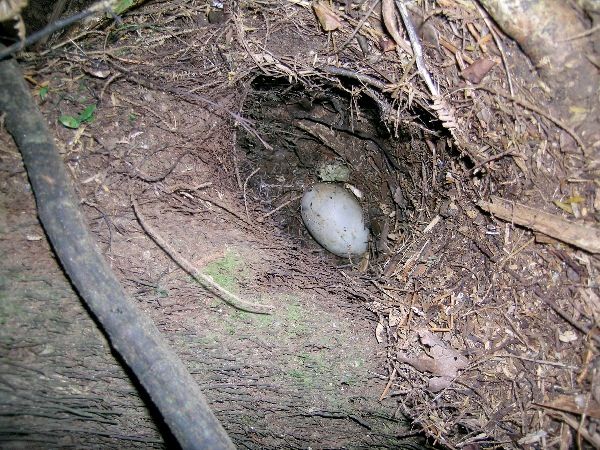Najpewniej tam pojde!
03.09.2025 17:09 — 👍 0 🔁 0 💬 0 📌 0GabiPaleo
@gabipaleo.bsky.social
•3D artist• •Zoology nerd• •Paleoart, occasionaly living animals and specevo-Pokezoa• You can find me on: http://linktr.ee/GabiPaleo
@gabipaleo.bsky.social
•3D artist• •Zoology nerd• •Paleoart, occasionaly living animals and specevo-Pokezoa• You can find me on: http://linktr.ee/GabiPaleo
Najpewniej tam pojde!
03.09.2025 17:09 — 👍 0 🔁 0 💬 0 📌 0yup
19.08.2025 00:30 — 👍 0 🔁 0 💬 1 📌 0
Illegal slash-and-burn practice in the region west of Manantenina, source: Diorit on Wikipedia
Hunting, theft of eggs, transfer of hyperdiseases from livestock and finally massive deforestation as a result of agricultural fires, which continues to this day, have turned Madagascar into a burning paradise, endangering the remaining biodiversity. 10/10
05.03.2025 14:49 — 👍 4 🔁 0 💬 0 📌 0
David Attenborough and skeleton of Aepyornis, Attenborough and the Giant Egg, BBC Earth
It is possible that humans only recently colonised Madagascar, around 1,500 years ago, but may have visited or accidentally crashed on the island earlier. Either way, there were probably many causes for the extinction of Aepyornis, similar to other megafauna of Madagascar. 9/10
05.03.2025 14:49 — 👍 4 🔁 0 💬 1 📌 0
Tibiotartus of elephant birds, with man-made fractures, Source: V. R. Pérez, University of Massachusetts Amherst
The archaeological sites suggest that humans arrived no earlier than 1,500 years ago. However, there are Aepyornis bones with cut marks dating back to 10,000 years ago. 8/10
05.03.2025 14:49 — 👍 3 🔁 0 💬 1 📌 0
Eggshells of fragmented elephant bird eggs, common find in southern Madagascar, source: Gifford Miller
Elephant birds became extinct about 1000 years ago. The reason for this is, of course, was man. But it's not clear if it was just hunting, we're not sure of when humans arrived and colonised Madagascar. 7/10
05.03.2025 14:49 — 👍 3 🔁 0 💬 1 📌 0
A mosaic of mature tropical dry forest and forest restoration at Berenty in southern Madagascar. Photo credit: Ariadna Mondragon Botero.
Isotope analasis suggest that the A. maximus were a browser, combing all this knowledge we can say that these giant birds were nocturnal, heavily reliant on smell, giant herbivore, living in dense forest, type of habitat that began to disappear with the arrival of humans. 6/10
05.03.2025 14:49 — 👍 3 🔁 0 💬 1 📌 0
Rakiura brown kiwi, Source: ndpederson on iNaturalist
Similar to the kiwi, Aepyornis maximus had reduced optic lobes, suggesting a nocturnal lifestyle. A. maximus had relatively large olfactory bulbs, larger than its relative, A. hildebranti, resulting in a greater sense of smell. 5/10
05.03.2025 14:49 — 👍 2 🔁 0 💬 1 📌 0
A Southern Brown kiwi photographed in the wild. (New Zealand Department of Conservation)
In 2014, successfully sequenced DNA answered the question of the origin of these giant birds and their place in taxonomy - their closest living relative is a kiwi. The two diverged about 54 million years ago and both, like most ratites, became flightless independently. 4/10
05.03.2025 14:49 — 👍 3 🔁 0 💬 1 📌 0
Source: WildMadagascar.org
Aepyornis had the largest egg of any known bird, dinosaur or amniote in general, with a volume of 5.6-13 litres. There is an almost complete skeleton of Aepyornis from an intact egg, which is much more robust than hatchlings of other ratites such as emus or ostriches. 3/10
05.03.2025 14:49 — 👍 4 🔁 0 💬 1 📌 0
Aepyornis maximus was sexually dimorphic, with females being much larger than males. Until recently they were thought to be a separate genus, the Vorombe titan. However, recent studies of their DNA show that they're genetically identical and belong to the same species. 2/10
05.03.2025 14:49 — 👍 4 🔁 0 💬 1 📌 0Elephant Bird (Aepyornis maximus) - possibly the largest bird in history, with some estimates reaching 1,000kg. The genus was endemic to Madagascar, with two species, the smaller A. hildebrandti and maximus (which, according to the latest research includes Vorombe Titan). 1/10
05.03.2025 14:49 — 👍 21 🔁 7 💬 1 📌 0South Island giant moa (Dinornis robustus) - the largest species of moa, weighing over 200 kg and capable of reaching 3.6 metres above the ground. As their name suggests, they were native to the South Island of New Zealand, primarily inhabiting lowland areas. 1/11
17.02.2025 14:23 — 👍 16 🔁 10 💬 1 📌 1
Dinornis robustus were the second largest birds ever found, surpassed in weight and size only by their distant cousin, the elephant bird. They became extinct +-600 years ago, due to the arrival of humans, like other moas. 2/11
17.02.2025 14:23 — 👍 6 🔁 2 💬 1 📌 0
Moa and emu egg, teara.govt.nz
A major factor in the extinction of moas, especially the giant ones, was egg theft by humans. These birds could lay 1-2 eggs at a time, investing heavily in a small number of hatchlings. 3/11
17.02.2025 14:23 — 👍 6 🔁 1 💬 1 📌 0
Eggshell of Moa's egg, otagomuseum.nz
This breeding strategy resulted in a population consisting mainly of long-lived, slow-breeding adults. Interestingly, despite their enormous size, moas eggs were very thin and fragile, only 1.4mm thick. 4/11
17.02.2025 14:23 — 👍 5 🔁 1 💬 1 📌 0
Kiwi, Ostrich and Giant Moa comparison
This may have led to another interesting adaptation, a major sexual dimorphism; males were much smaller than females, so much so that they were once thought to be different species. 5/11
17.02.2025 14:23 — 👍 8 🔁 2 💬 1 📌 0
Ostrich taking care of its eggs, but not sitting on them, behaviour which probably occured in Moas. DStamatelatos
Similar to some modern ratites, it's thought that males took care of eggs and young alone, the smaller size made it easier not to damage eggs, although they probably didn't sit on them but wrapped their necks around them. 6/11
17.02.2025 14:23 — 👍 6 🔁 1 💬 1 📌 0
Nest of a kiwi in a small burrow, backyardkiwi.org.nz
They nested in holes in the ground or even in hollow tree trunks, probably reused for many years, suggesting that they lived in isolation rather than in a colony. 7/11
17.02.2025 14:23 — 👍 6 🔁 1 💬 1 📌 0
Hatchlings of Southern Ostrich, by eugenevs on iNaturalist
It is likely that females competed for males with the largest territories, perhaps physically or just by vocalisation. After hatching from the egg, baby moa were already able to walk and feed, probably not only on ferns and grasses but also on smaller animals. 8/11
17.02.2025 14:23 — 👍 6 🔁 1 💬 1 📌 0
Cassowary with hatchlings, www.rainforestrescue.org.au
Moas could reach sexual maturity in a few years, but probably social behaviour would prevent them from breeding until much later; much like the cassowary, which doesn't breed until it has its own territory. 9/11
17.02.2025 14:23 — 👍 4 🔁 1 💬 1 📌 0
Elegant crested tinamou, DickDaniels, theworldbirds.org
Moas were once thought to be closely related to another New Zealand bird - the kiwi - but DNA sequencing has shown that their closest relative is actually the tinamou, a small flying ratite/paleognath from South America. 10/11
17.02.2025 14:23 — 👍 4 🔁 1 💬 1 📌 0
Kevin from "Up!"
The two diverged about 60 million years ago, making the moa another example of a paleognath that lost its ability to fly independently after reaching a region without many other large herbivores and predators. 11/11
17.02.2025 14:23 — 👍 5 🔁 1 💬 0 📌 0
Kevin from "Up!"
The two diverged about 60 million years ago, making the moa another example of a paleognath that lost its ability to fly independently after reaching a region without many other large herbivores and predators. 11/11
17.02.2025 14:23 — 👍 5 🔁 1 💬 0 📌 0
Elegant crested tinamou, DickDaniels, theworldbirds.org
Moas were once thought to be closely related to another New Zealand bird - the kiwi - but DNA sequencing has shown that their closest relative is actually the tinamou, a small flying ratite/paleognath from South America. 10/11
17.02.2025 14:23 — 👍 4 🔁 1 💬 1 📌 0
Cassowary with hatchlings, www.rainforestrescue.org.au
Moas could reach sexual maturity in a few years, but probably social behaviour would prevent them from breeding until much later; much like the cassowary, which doesn't breed until it has its own territory. 9/11
17.02.2025 14:23 — 👍 4 🔁 1 💬 1 📌 0
Hatchlings of Southern Ostrich, by eugenevs on iNaturalist
It is likely that females competed for males with the largest territories, perhaps physically or just by vocalisation. After hatching from the egg, baby moa were already able to walk and feed, probably not only on ferns and grasses but also on smaller animals. 8/11
17.02.2025 14:23 — 👍 6 🔁 1 💬 1 📌 0
Nest of a kiwi in a small burrow, backyardkiwi.org.nz
They nested in holes in the ground or even in hollow tree trunks, probably reused for many years, suggesting that they lived in isolation rather than in a colony. 7/11
17.02.2025 14:23 — 👍 6 🔁 1 💬 1 📌 0
Ostrich taking care of its eggs, but not sitting on them, behaviour which probably occured in Moas. DStamatelatos
Similar to some modern ratites, it's thought that males took care of eggs and young alone, the smaller size made it easier not to damage eggs, although they probably didn't sit on them but wrapped their necks around them. 6/11
17.02.2025 14:23 — 👍 6 🔁 1 💬 1 📌 0
Kiwi, Ostrich and Giant Moa comparison
This may have led to another interesting adaptation, a major sexual dimorphism; males were much smaller than females, so much so that they were once thought to be different species. 5/11
17.02.2025 14:23 — 👍 8 🔁 2 💬 1 📌 0